Anne of France , Duchess of Bourbon, is one of the most fascinating personalities of the Middle Ages. Political head at the pinnacle of power for many years, patron active and knowledgeable, great educator and writer talented, she remains largely unknown. A woman in the shadows who “took as much care to hide power as others take to show it” (Michelet). Light!
The "least crazy" woman in the kingdom
Anne was born in 1461 in Genappe in Flanders. A royal blood runs in the veins of this princess. That of King Louis XI , nicknamed "the Universal Aragne", one of the most skilful politicians of the XV th century, great initiator of the centralization of power in France. After Anne come Jeanne in 1464 and Charles in 1470.
Married at the age of twelve to Pierre de Beaujeu , twenty years older than her, the princess remains very close to her father. Observing Louis XI is for Anne the best learning. She develops the same political instinct very sure. The king, a great misogynist if ever there was one, still recognizes the qualities of his eldest daughter, whom he describes as the “least crazy woman. of his kingdom, "for there is no midwife in this world. »
In 1483, Louis XI felt that his end was near. His suspicious nature turns to paranoia :he constantly renews his guards and servants, fearing betrayal. He is especially suspicious of the turbulent prince of the blood, Louis, Duke of Orléans, to whom he gives his youngest daughter, Jeanne, in marriage. The few people authorized to come and visit him in his castle of Plessis-Lès-Tours are his wife Charlotte, his daughter Anne and his son-in-law Pierre.
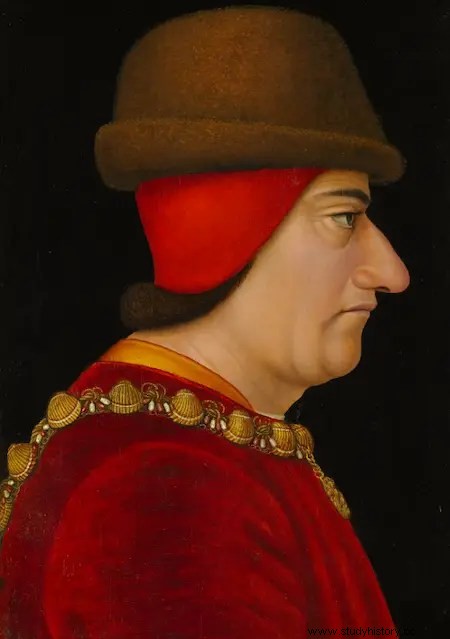
Fearing that some would take advantage of his weakness to snatch power from him and ransack all his work, he took precautions and entrusted Anne and Pierre with Charles' education and conduct who is only 13 years old. Aware that his wife has neither intelligence nor the necessary charisma to take on such a task, he has on the contrary full confidence in his daughter. Louis XI expired in August 1483, at the age of 60. Anne, 23, has to take matters into her own hands!
The princess leaves with considerable disadvantages . Admittedly the king's eldest daughter, she is nonetheless... a daughter. Let's not forget that France is governed by the famous Salic law, invented from scratch to prevent women from inheriting or passing on the crown, barring them (as long as possible) from access to government. Regents are barely tolerated when they are widows or mothers of kings. Anne is neither. She is only the sister of Charles VIII. Very young (too young), she also could not rely on her husband, who was older, because he was not one of the greatest princes of the kingdom.
Of course, Pierre belonged to the prestigious Bourbon family, but in 1483, at the age of 45, he was still only he was a cadet, a "Sire de Beaujeu", and his fortune was due only to the (not always brilliant) services he had rendered to his father-in-law. In a still feudal society where the logic of age, seniority and titles prevailed, the handicap was very heavy.
Against all odds, Anne will impose her authority with a subtlety that commands admiration.
“No other could be closer and more faithful to us”
When Louis XI gave up his soul to God, Anne and Pierre were already in Amboise with Charles and two hundred archers from the royal guard. They shut themselves up with the young monarch in the fortress. As expected, the first to rebel is the Duke of Orleans. He reproaches Charles for being under the control of Anne and Pierre, usurpers of a power that belongs to him as well as to the great lords. The little king replies, in a letter dictated by Anne:
If we want to have our beloved sister with us, if we place all our trust in her, no one will has the right to be surprised, since no other could be closer and more faithful to us and that our late lord and father expressly entrusted to our beloved brother the Sire de Beaujeu the conduct and care of our person.
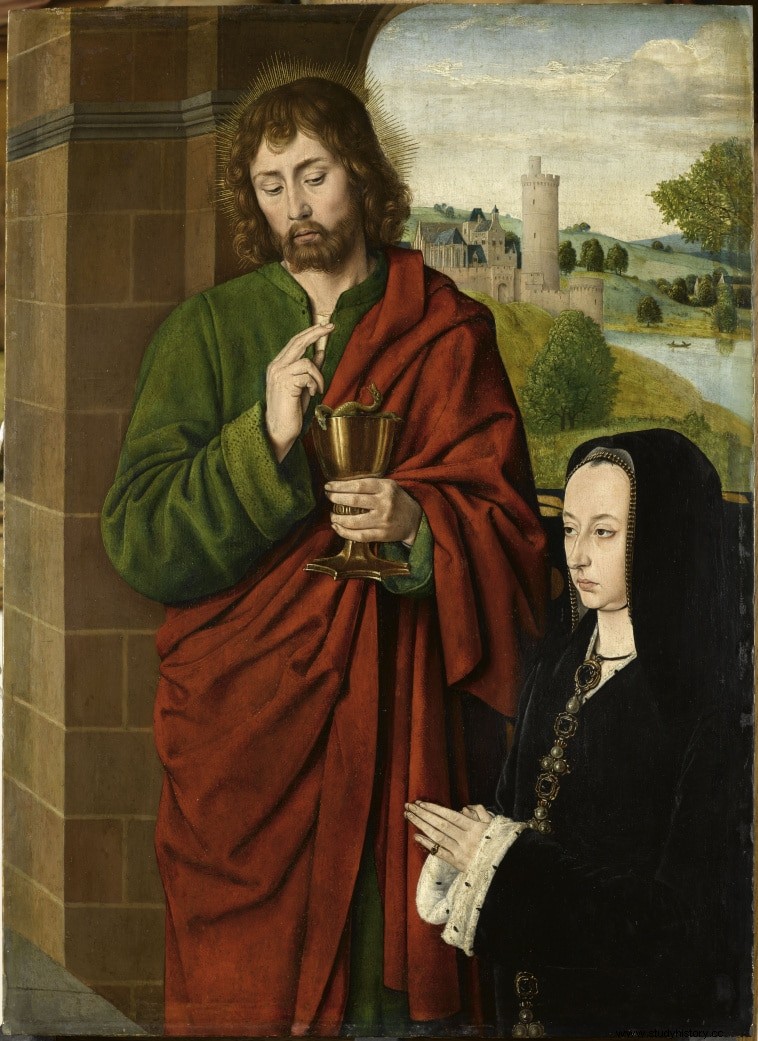
Furious, Louis d'Orléans multiplies the machinations. He tries to arouse the Parliament, the University and the lords of all the provinces to rally them to the cause. A waste of time, Anne is always one step ahead and pull the rug out from under him. Mastering the art of diplomacy like her father, she immediately grasps situations and reacts promptly. She flatters the lords, forges alliances, rewards institutions for their loyalty to royalty, shows Charles VIII to his people... With each new rebellion of her brother-in-law, she finds a parade.
The large-scale coalitions woven by the prince reached their climax in 1486:the Duke of Orléans brought into battle the Duke of Brittany François II, the Emperor Maximilian I, the King of England Henry VII. A league is formed. But Anne, again, is the most skilful. She weaves between the protagonists, makes overtures to each other, promises compensation and sends reassuring letters. In 1488, Anne managed to stifle any hint of uprising without shedding a drop of blood! It is a triumph for the Duke and Duchess of Bourbon. Orléans is thrown in prison.
“Madame la Grande”
Anne can now serenely pursue the work of her father, who endeavored to reunify the French provinces. With finesse and firmness, she brings the great feudal lords to heel and works to enlarge the kingdom . Her masterstroke was achieved when, after the death of Duke François II of Brittany, she imposed the marriage and her daughter and heiress, the young Duchess Anne , with his brother Charles VIII. The union, celebrated in 1491, will eventually make it possible to definitively attach the coveted Brittany to the kingdom of France.
Mastering like Louis XI the subtle art of dissimulation, Anne now gives precedence to the young couple in public. But in the shadows, the one the people call "Madame la Grande" continues to govern . Moreover, Charles VIII and Anne of Brittany spend long months each year in Moulins, capital of Bourbonnais, stronghold of Anne and Pierre and nerve center of Court life. When Charles VIII went to war in Italy in 1495, he did not entrust the regency to his wife, but to Pierre de Beaujeu… So to Anne. No one is fooled. Pierre is in the front line but it is a tandem that reigns. Brantôme reports the words of his grandmother Louise de Daillon du Lude, who was practically raised with Anne de France and rubbed shoulders with her a lot:
She no longer remained as regent but only her husband, Monsieur de Bourbon, regent. It is true that she made him do many things with his head; for she governed it and knew how to lead it well.
A political strategy that testifies to a great intelligence and who has “fooled more than one historian ! Reconciled with the Duke of Orleans, she favors his accession to power after the accidental death of his brother, victim of a cerebral hemorrhage after banging his head against a door lintel. In the trial between Louis and his wife from whom he wants to separate, Anne testifies against her own sister , poor Jeanne, claiming that her union with Louis XII was never consummated. She thus allows the latter to marry Anne of Brittany in turn... and to keep Brittany in the bosom of France.
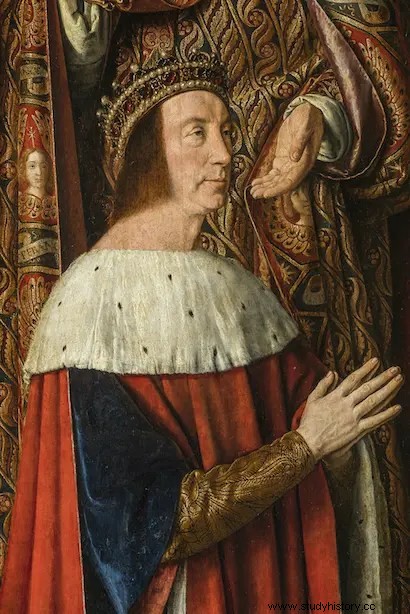
Architecture and gardens
Pierre and Anne became Duke and Duchess of Bourbonnais in 1488, a title to which Anne attaches great importance. Mills , the administrative capital of the duchy, offers a castle that was extensively remodeled by Louis II of Bourbon between 1366 and 1375. Protected by water ditches, four wings wrap around an interior courtyard. A monumental master tower of 47 meters dominates the whole. The new ducal couple therefore inherited an already imposing castle.
Anne transforms it into a luxurious palace worthy of representing the power and brilliance of his family. She had it enlarged with a new wing 70 meters long in a pure flamboyant Gothic style, ending with a chapel dedicated to Saint Louis. In 1497, she attached a pavilion there, intended to receive her brother with dignity. If Charles VIII, who died the following year, will never benefit from it, the modernism of this Pavilion calls out. It is the first Renaissance construction of this scale in France. However, the architectural style is still imbued with “a French Gothic tradition » :the exuberance of the carved decoration is typical of flamboyant Gothic .
The wing built by Anne de Beaujeu went up in smoke in 1755, when a fire ravaged the castle, which had become the property of the Prince of Condé. The Pavilion, inscribed on the very first list of Historic Monuments by Prosper Mérimée in 1840, is fortunately still standing!
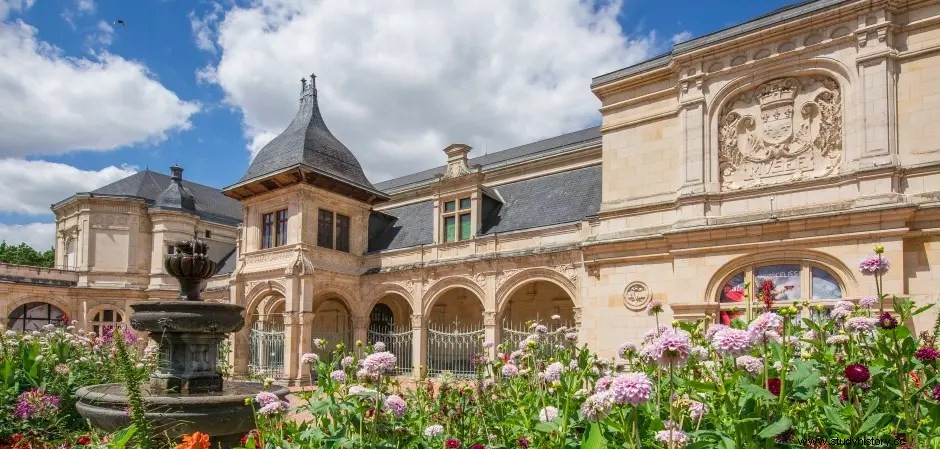
The Duchess completely transforms the old medieval gardens. Gone are the square flowerbeds and arbours, make way for vast stepped terraces, wide paths lined with benches and fountains. One of these fountains, made of Volvic stone, “presented complex shapes, with two levels of basins and different water jets. The ponds surmounted by small bridges and embellished with bucolic caves aroused the admiration of contemporaries. A labyrinth, a vegetable garden, an Orangery and the inevitable Menagerie populated by exotic animals complete the set.
Anne inherited from her father the passion for animals . In 1489, she wrote to Laurent de Medici to remind her of the promise he made to her to send her a giraffe because "it is the beast in the world that I most desire to see." Louis XI was especially fond of canaries, small songbirds that he had delivered by the dozens, even hundreds. Anne buys 56 of them which she has installed in the large cage lined with small golden brass rings and bells in the Château du Plessis where she likes to reside.
Not far from Moulins, Anne falls under the spell of Chantelle , erected on its promontory in the middle of the greenery. The Duchess completely transformed the old castle, rebuilt the primitive monastery and built her home next to the priory. Through this dwelling, she can go to mass without having to leave the castle grounds! Chantelle is her refuge.
Patron
Moulins becomes the most important artistic and literary center of the kingdom. Anne protects many authors, painters, sculptors and master glassmakers:the poets Jean le Maire des Belges and Jean Marot, the painters Jean Perréal and Jean Richer dit d'Orléans, the sculptor Jean des Chartres who creates magnificent limestone heads intended for to adorn the niches of his Pavilion, the architect Jean Musnier and many glassmakers gathered around Charlot du Moustier, who made stained glass windows for the collegiate church of Moulins...
The paintings commissioned by Anne are remarkable and bear witness to a very sure taste. In 1492, she asked the talented painter Jean Hey to create a triptych depicting his family around a central panel. Anne is depicted in a severe manner, followed by her very young daughter Suzanne, whose panel was then detached to form a portrait in its own right.
It is to Anne that we still owe a major work in the history of art, the Triptych of the Master of Moulins , which represents a virgin in glory surrounded by Pierre II of Bourbon, his wife and their daughter Suzanne. This oil on wood is considered a masterpiece, the culmination of medieval painting in all its pictorial perfection . The identity of this mysterious painter, named in the archives "Maître Jehan the Painter" and nicknamed the Master of Moulins, has never been established with certainty.
It can only be a leading painter, as shown by the richness of his palette, the intelligence with which he situates his characters, the moderate presence of realism that blends seamlessly with a very graphic vision.
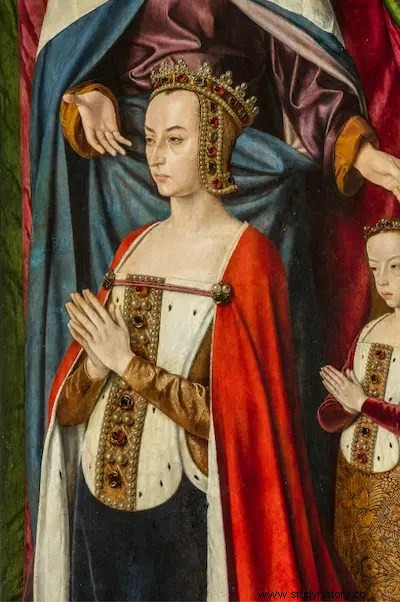
“Splendid and magnificent by nature”
If Anne seems austere and severe on the rare paintings that represent her, she lives in luxury and leads the way , as befits a personality of his rank. Brantôme describes the House of Bourbon as “one of the largest and most splendid in Christendom. He says it's thanks to Anne, who does everything she can to make it shine.
“Splendid and magnificent in nature Anne de France has a Court that is “always very beautiful and large ". She is "always accompanied by many ladies and girls ". Thus, the Duchess of Bourbon is the first princess to give such importance to the female entourage , an example that Anne of Brittany would follow.
To furnish and decorate Moulins, Anne does not skimp on expenses. She orders tapestries, embroidered velvet hangings, “cloths of gold, silk and wool, breakdowns and furs and other things for her pleasure. Among other precious objects, we know that she possesses "an ivory chessboard with figures .
She is said to be particularly demanding with the gifts she receives. An official document recounts an episode that took place when Charles VIII first entered Lyon in 1490. The City Council offered the Duchess a crockery service:basins, flasks and gilded pots... Madame considered the present insufficient given the the support it lent to the city so that the fairs, transferred to Bourges, be restored to Lyon. To be forgiven, the Council buys from the Capponi, Florentine exiles living in Lyon, a marble fountain much noticed by the princess. They have it delivered to Moulins so that Madame can decorate her garden with it!
The Duchess of Bourbon is also a skilled rider and a seasoned hunter , like his father. When hunting with hounds, she is always at the head of her crew, haranguing her pack:her favorite dog is called Baude. Without hesitation, she throws herself into the fray, crosses the forests at a gallop and never backs down from the quarry.
Woman of letters and educator
Anne de France is the first of a generation of brilliant women , both political leaders and patrons, who will occupy a fundamental place in the history of the XVI th century. She is the one who trains most of these female mistresses.
Louise of Savoy , one of the most outstanding female figures of the Renaissance, was only seven years old when her mother, a Bourbon, died. The future mother of François I st is taken in by her aunt Anne of France, from whom she draws her love of books, understands the value of using letters and the arts as a means of government and learns how to use power in the shadows with talent… Before that the engagement of the little Marguerite of Austria with Charles VIII are broken off to allow the king to marry Anne of Brittany, the child is brought up in France by the Duchess of Bourbon for ten years, until she is thirteen. It is certainly no coincidence that Marguerite would later become one of the most brilliant political minds of her century! After the premature death of Anne of Brittany in 1515, Louis XII remarried the young Englishwoman Mary Tudor . It is "Madame la Grande" that he asks to inculcate in his wife "the fashions and manners of France. Anne de France is still raising her future son-in-law Charles de Montpensier in Moulins , who married his daughter Suzanne in 1505, as well as Diane de Poitiers , the most famous royal favorite and great protector of the arts!
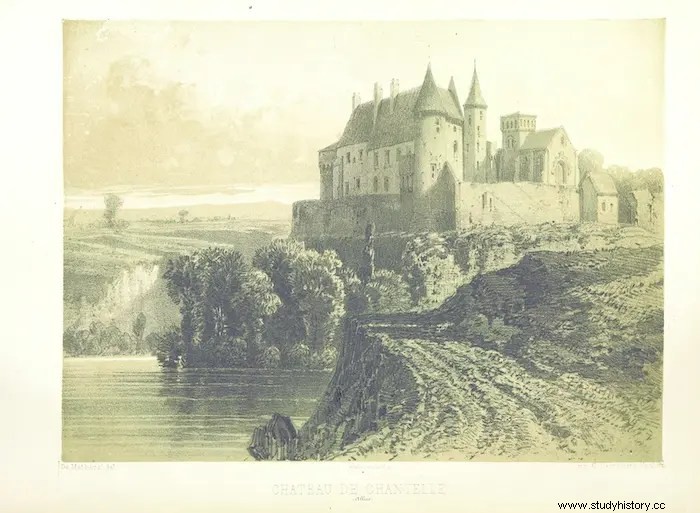
In 1503, Pierre II de Bourbon died. All Anne has left is her granddaughter Suzanne, twelve years old, who becomes the heiress of a powerful principality. The Duchess knows all too well the difficulties of being a woman in a man's world . She decides to leave her darling daughter Teachings to guide her. She chooses to go straight to the point, dividing her text into 30 short and pragmatic chapters.
In this text of great modernity , Anne gives a summary of her own experience, insists on the faults of her century and gives her maternal advice to preserve herself from them. She returns several times to the decadence of the nobility , whose pride makes her detestable. A nobility that harms itself:“It is great pity, when nobility is trampled on by those on whom it must be supported! For her, the true nobility, that which her daughter must incarnate, is that which sets an example:"The nature of nobles must be to increase their fame better and better, both in virtues and find out » because « nobility however great, is worth nothing, if it is not adorned with virtues. Nobles must earn their place in society and their role at the top of the pyramid by merit.
Anne also warns her daughter against relations between men and women. The world is ruthless. To survive, you must show no weakness and do not confide their feelings to anyone. She seems to draw her own portrait when she describes the essential qualities to possess. All are about self-control:
Always an honorable bearing, cold and assured manners, a humble look, measured, steady and firm speech, never a hesitant talk.
The Teachings are first carefully copied for his attention in an exceptional manuscript adorned with the arms of the Bourbon-Beaujeu, its motto "Espérance" and nineteen illuminations. Given to Suzanne for her wedding, the manuscript changed owners several times. The text is considered by the great ladies of the kingdom, who have it printed, as an essential. Diane de Poitiers carefully kept the manuscript for a time at the Château d'Anet . It ends up landing in Saint Petersburg, where it is copied with its miniatures. Fortunately, because the original manuscript disappeared in the 1930s!
Anne of France died in 1522, at the age of sixty-two, in her chateau at Chantelle, where she had been living in retirement for several years. She rests at the prieuré de Souvigny , nearby, with other members of the Bourbon family.
Rising to power like a hair in the soup, she had weathered the storm and got away with it. esteem of all. Having become Duchess of Bourbon and Auvergne, she had governed her domains with the same skill. She had also laid the first stones of the great court which would henceforth characterize French political life, by gathering around her brother Charles VIII and the main actors of the government a skilful mix of women, scholars and artists capable of giving the desire to be there, to attract the great nobility […], to constitute a showcase of power. So that the women called upon to play their role in this system could do so, Anne de France got down to training them, hence her long reflection on female education, on how to behave in society. […] So that everyone could feel the monarchical superiority, she had built at Moulins a splendid castle inspired by the latest Italian novelties – one of the first of its kind in France; she had gathered there an impressive library, called intellectuals, painters, sculptors.
